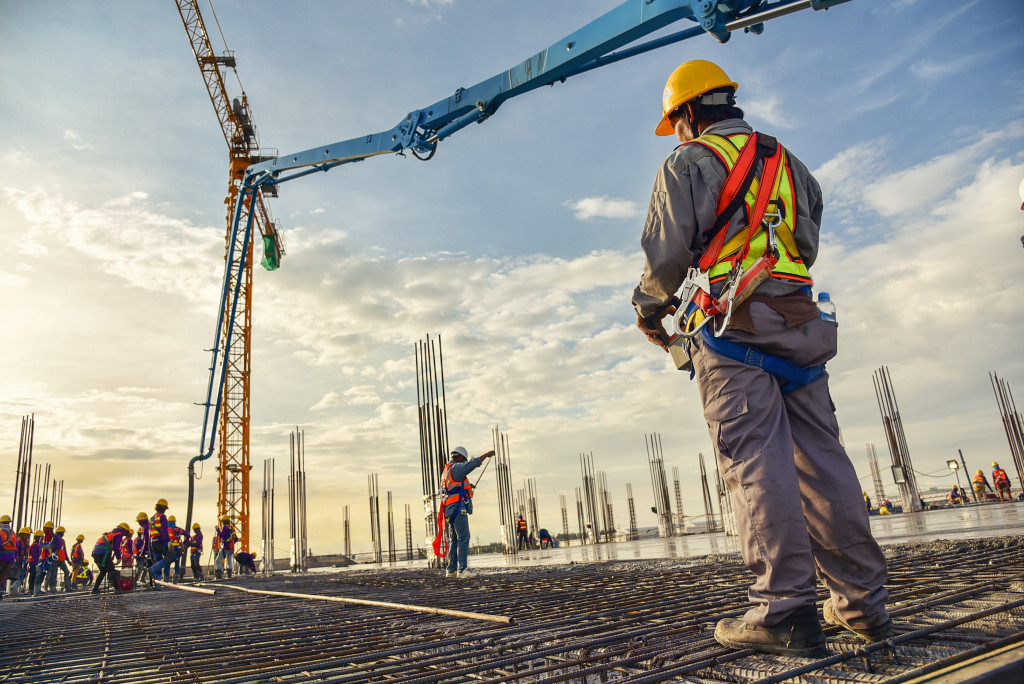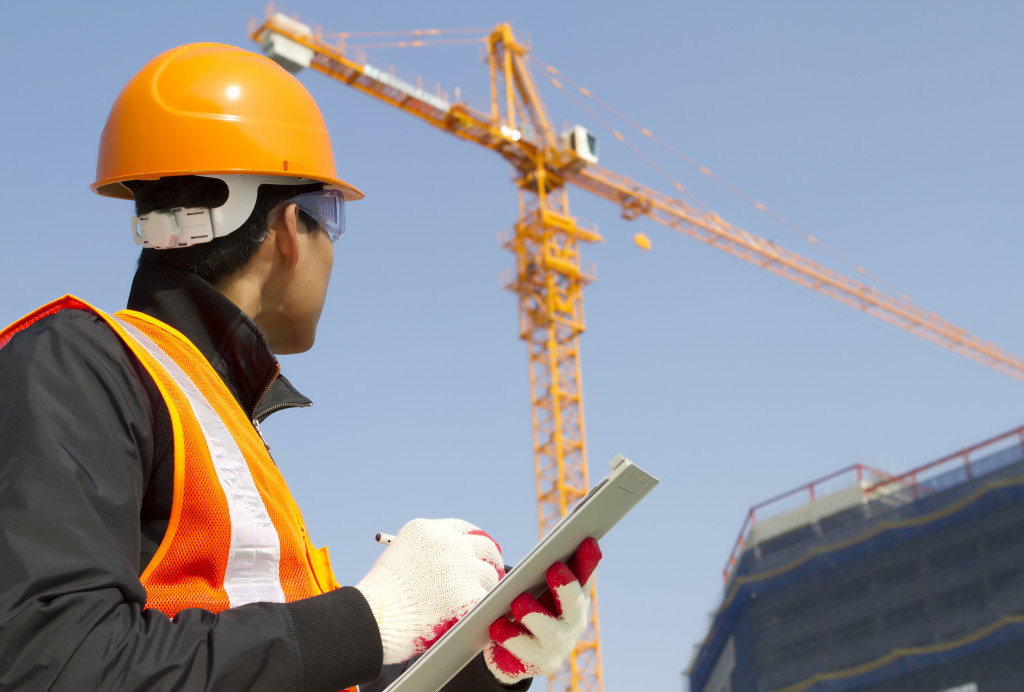- Cranes are essential construction equipment, with the global market projected to reach $54.6 billion by 2027.
- Proper location selection is crucial for setting up a crane, considering ground stability, space, and proximity to residential areas.
- Essential parts in crane setup include boom assembly, outriggers assembly, counterweights installation, safety features, and safety testing.
- Safety testing involves checking stability, load capacity, and crane operators’ understanding of safety procedures.
Crane is an essential piece of equipment in the construction industry as it greatly facilitates the lifting and moving of heavy materials and equipment. You would be hard-pressed to find a construction site without a crane. According to industry research, the global crane market size had a $33.6 billion value in 2019, projected to surmount $42 billion by 2027.
One of the main reasons cranes are so integral to construction is their ability to handle heavy loads efficiently. For instance, tower cranes can lift 20 tons of weight to heights over 265 feet. This makes them ideal for tall structures such as skyscrapers and high-rise buildings. But not only are cranes capable of lifting heavy objects, but they can also move them horizontally and vertically with precision and control, thanks to features like telescopic booms, adjustable outriggers, and hydraulic jibs.
However, the massive heavy equipment must be correctly set up before use. Here are some critical steps to keep in mind when setting up a crane for construction:
Creating Space
When setting up a crane for construction, creating a strategic space appropriate for the purpose is crucial. A suitable location must be selected based on factors such as the crane’s size, the weight and size of the load to be lifted, the distance between the crane and the load, and the ground stability.
A crane requires a large area for setup, which can be achieved by removing obstacles such as trees, rocks, or debris. The surface where the crane will be placed must be level and strong enough to support the weight of the crane and the load being lifted. If the ground is uneven, leveling must be done to prevent accidents.
Moreover, an appropriate location must be chosen to ensure the crane has enough space to move around the site. The area must be wide enough to provide the operator with sufficient visual clearance and freedom of movement. A good rule of thumb is to dedicate about 3 meters (10 feet) of space surrounding the crane to ensure safe operation and prevent accidents.
In addition to the above, a good location for setting up a crane must also consider nearby residential homes and businesses. If the construction site is located in a residential area, keeping the noise level as low as possible is essential. This will help to eliminate any potential disturbances to residents and will also help ensure that construction work can be carried out efficiently.
Setting Up the Essential Parts

Setting up a massive crane is a complex process that involves many steps due to the importance of safety measures and the precision required to lift and move heavy loads. The following are the essential parts that must be considered during crane setup:
Boom Assembly
The crane’s boom is the main arm responsible for lifting and moving heavy objects, making it the most crucial part of the equipment. The process of assembling the boom is meticulous and requires proper coordination to prevent accidents and ensure stability. The boom’s length and angle must be precisely adjusted for safe operation, and the hydraulic hoisting system must be checked before use. Durable two-leg chain slings are also necessary for connecting the boom to the crane’s lifting points.
Outriggers Assembly
Outriggers help to keep the crane stable during lifting operations, and they must be correctly assembled to prevent crane overturning, especially on uneven surfaces. Outriggers spread the crane’s weight and load over a broader area, creating a stable base for safe operation.
Counterweights Installation
Counterweights balance the weight of the lifted load, so it is crucial to install them correctly before using the crane. The amount and distribution of counterweights installed depend on the crane’s model, size, and load weight. This part of the setup process is essential for maintaining the crane’s stability, preventing tilting, and ensuring the crane can lift and move loads safely.
Safety Features
Before a crane can be constructed, all safety features must be present. These features include boom angle sensors, load indicators, and automatic protection systems (APS) that prevent the crane from moving beyond set limits. All controls, switches, and safety devices should be checked before lifting any load.
Safety Testing

Apart from the steps mentioned above, safety testing is another critical aspect of setting up a crane for construction. Safety testing helps ensure the crane is safe to use and meets all safety standards before operations begin. It involves checking all aspects of the crane, including its moving parts, sensors, and safety devices, to ensure they work correctly.
Safety testing is performed by certified professionals who check the crane’s stability, load-bearing capacity, and other essential features. Crane operators must pass a rigorous safety test before operating the equipment. They must demonstrate a thorough understanding of crane safety procedures, including load limits, proper operation, and emergency procedures.
Load testing is essential to crane safety testing and is performed to determine the crane’s maximum lifting capacity. The crane is tested with incremental loads to ensure it can handle the load’s weight safely. This ensures the crane can lift and maneuver heavy loads without becoming unstable or tipping over.
Final Thoughts
Setting up a crane correctly ensures workers’ safety and structures’ integrity. The process requires careful planning and coordination between operators, engineers, surveyors, and other professionals involved in the project. All these steps will help create a safe construction work environment and prevent disasters from using heavy equipment like cranes.
